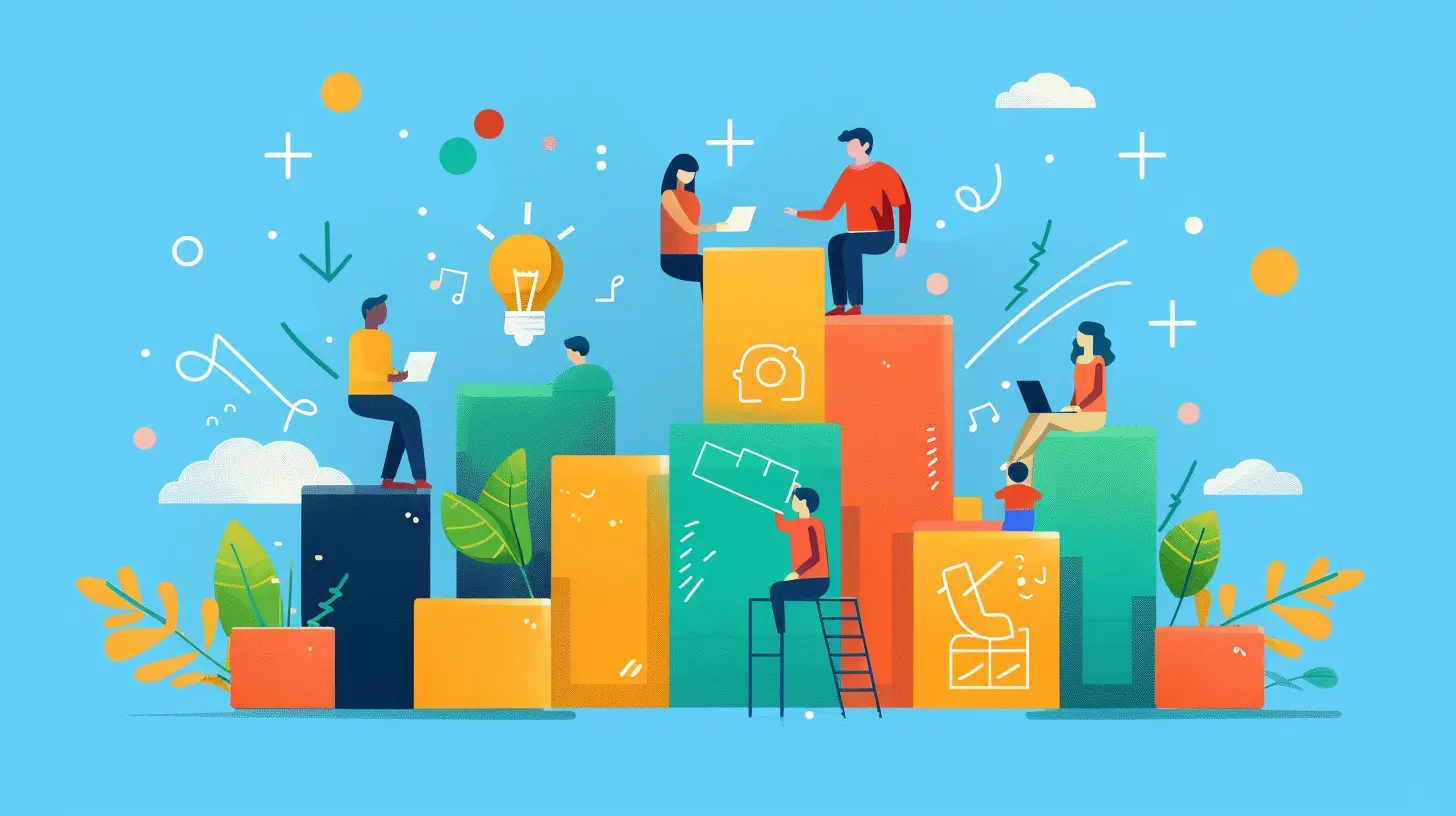How to Develop Flexibility and Agility in Learning
10 May 2025
When it comes to learning, adaptability is everything. The world is changing at an astonishing pace, and sticking to rigid learning methods can leave you struggling to keep up. Whether you're a student, a professional, or someone just eager to grow, flexibility and agility in learning can give you a competitive edge.
But how do you train your brain to roll with the punches? That's exactly what we're about to unpack. Let's dive into the best strategies to make your learning process more dynamic, effective, and future-proof.

What Does Flexibility and Agility in Learning Mean?
Before we jump into the "how," let’s clarify the "what."- Learning Flexibility means being open to new ideas, adjusting your perspectives, and embracing different learning styles.
- Learning Agility is the ability to quickly grasp new concepts, apply them in different contexts, and pivot when needed.
Together, they help you adapt to change, solve problems creatively, and keep improving regardless of circumstances. Think of it like being a gymnast—able to pivot, bend, and land on your feet no matter what learning challenge comes your way.

Why Is Learning Flexibility and Agility Important?
Imagine trying to navigate a constantly changing landscape with a fixed map—it wouldn’t work, right? The same goes for learning.Here’s why developing flexibility and agility is crucial:
- The job market is evolving – New skills are needed all the time. Sticking to one rigid way of learning might leave you behind.
- Unexpected challenges arise – Whether it's a sudden career shift or a shift in how education is delivered (hello, online learning!), adaptability helps you thrive.
- Critical thinking improves – When you're open to different perspectives, you make better decisions and solve problems more effectively.
- Confidence grows – The more adaptable you become, the more confident you’ll feel when tackling new challenges.
Sounds good, right? Now let's get into the steps to make this happen.

1. Foster a Growth Mindset
One of the biggest roadblocks to learning agility is a fixed mindset—the belief that intelligence and skills are set in stone. If you think "I'm just not good at math" or "I'm too old to learn this," you’re limiting yourself.A growth mindset, on the other hand, encourages you to believe that abilities can be developed through effort, strategies, and help from others.
How to Shift Your Mindset:
- Embrace challenges instead of avoiding them.- view mistakes as learning opportunities rather than failures.
- Replace thoughts like "I can't do this" with "I can't do this yet."
- Celebrate small wins along the way.

2. Become Comfortable with Uncertainty
Learning is full of unknowns. Being flexible means getting comfortable with not always having the answers. Instead of fearing uncertainty, see it as a space for discovery.Tips to Embrace the Unknown:
- Switch things up! Try learning in different environments, using varied materials, or even switching between digital and physical notes.- Ask more questions, even if you’re unsure of what the answer might be.
- Get into discussions that challenge your opinions—you’ll see how different perspectives can be eye-opening.
3. Develop Strong Problem-Solving Skills
Being agile in learning means thinking critically and adjusting strategies when the first approach doesn’t work.How to Enhance Problem-Solving:
- Break big challenges into smaller, manageable parts.- Experiment with solutions instead of getting stuck overanalyzing the problem.
- Reflect on past experiences—what worked before might help you again!
4. Learn How to Learn
This might sound strange, but many people don’t actually know how to learn efficiently. They consume information without applying or retaining much of it.Strategies for Smart Learning:
- Use active recall (quiz yourself instead of just rereading material).- Teach what you learn—it reinforces knowledge.
- Apply new information to real-life scenarios to make it stick.
Being intentional about how you learn makes a huge difference in your ability to adapt.
5. Train Yourself to Think in Multiple Ways
If you only approach problems from one angle, you’ll struggle when that method doesn’t work. Flexible learners train themselves to think differently.Ways to Improve Cognitive Flexibility:
- Look at problems from various perspectives (What would an engineer, artist, or scientist say about this?)- Try learning through different mediums—watch videos, read books, listen to podcasts, and engage in hands-on experiences.
- Step out of your comfort zone—explore topics that challenge your usual way of thinking.
6. Develop Emotional Resilience
Let’s be real—learning isn’t always fun. It can be frustrating when things don’t make sense right away. That’s why emotional resilience is key.How to Build Emotional Resilience:
- Accept that setbacks and struggles are part of learning.- Practice mindfulness—it helps with staying calm and focused.
- Surround yourself with people who support and encourage growth.
By strengthening your emotional resilience, you’ll keep pushing forward, even when learning gets tough.
7. Adapt to New Technologies
Technology is reshaping the way we learn. From AI-driven learning tools to interactive courses, staying technologically agile gives you an advantage.How to Stay Tech-Savvy:
- Experiment with different learning platforms like Coursera, Udemy, and Khan Academy.- Learn how to effectively use tools like Notion, Anki, or Evernote to enhance learning.
- Stay curious about emerging tech—AI, automation, and digital trends are worth keeping an eye on.
8. Cultivate Curiosity
Curiosity fuels both flexibility and agility. The more curious you are, the more open you’ll be to exploring new ideas.Ways to Boost Curiosity:
- Ask "why?" and "what if?" more often—it leads to deeper understanding.- Read widely, not just in your field but across different subjects.
- Engage in lifelong learning—whether it's a new language, skill, or hobby, always keep growing.
9. Practice Adaptability in Daily Life
Your learning habits are shaped by how you respond to daily challenges. By making small adjustments in your routine, you train yourself to be more adaptable.Simple Ways to Practise Adaptability:
- Take a different route to work or school—see how a small change affects your mindset.- Try a new hobby that challenges a different skill set.
- Work on tasks using a method you haven’t tried before (e.g., mind maps, audio notes).
Final Thoughts
Flexibility and agility in learning aren’t just nice-to-have skills—they're essential for thriving in a rapidly changing world. By embracing a growth mindset, staying curious, and continuously challenging yourself, you’ll become a more resilient, adaptable learner.Remember, learning isn’t about sticking to one way forever—it’s about evolving, shifting gears when needed, and enjoying the ride. So, are you ready to embrace a more dynamic way of learning?
all images in this post were generated using AI tools
Category:
Skill DevelopmentAuthor:

Bethany Hudson
Discussion
rate this article
6 comments
Lyla Hamilton
This article effectively highlights the importance of adaptability in learning. By emphasizing diverse strategies such as mindset shifts and tailored approaches, it empowers educators and learners alike to foster resilience, encouraging a more responsive and personalized educational experience in an ever-changing landscape.
May 20, 2025 at 1:02 PM

Bethany Hudson
Thank you for your insightful comment! I'm glad you found the emphasis on adaptability and personalized strategies valuable for fostering resilience in education.
Skyler McKellar
Great article! Flexibility and agility in learning are essential in today’s fast-paced world. I love the practical tips you shared—especially the emphasis on adapting strategies to fit individual needs. It’s a reminder that learning should be a dynamic and enjoyable journey!
May 18, 2025 at 10:27 AM

Bethany Hudson
Thank you for your kind words! I'm glad you found the tips useful—embracing flexibility truly enhances the learning experience.
Jack Bryant
Flexibility and agility in learning aren't optional; they are essential for thriving in today's fast-paced world!
May 18, 2025 at 4:14 AM

Bethany Hudson
Absolutely! Embracing flexibility and agility in learning empowers individuals to adapt and excel in an ever-changing landscape. It's key to personal and professional success.
Madison Willis
Flexibility and agility in learning enhance adaptability, critical thinking, and problem-solving skills, essential for navigating today’s dynamic educational landscape.
May 17, 2025 at 1:01 PM

Bethany Hudson
Absolutely! Embracing flexibility and agility in learning fosters essential skills that prepare students to thrive in a rapidly changing world.
Maura Wolf
Emphasizing adaptability in learning fosters resilience, encourages problem-solving, and enhances critical thinking, essential skills for navigating today’s dynamic world.
May 14, 2025 at 11:45 AM

Bethany Hudson
Thank you for your insightful comment! I completely agree—adaptability truly is key to thriving in our ever-changing world.
Upton McCarty
Adaptability fosters lifelong learning.
May 13, 2025 at 3:29 AM

Bethany Hudson
Absolutely! Embracing adaptability not only enhances our ability to learn but also encourages continuous growth throughout our lives.
MORE POSTS

The Importance of Feedback in a Blended Learning Model

Study Abroad Programs: Expanding Horizons Beyond the Classroom

How to Cultivate a Positive Mindset in a Stressful Teaching Environment

The Benefits of Joining Academic and Social Clubs in College

Mastering English Pronunciation: Tips for Non-Native Speakers